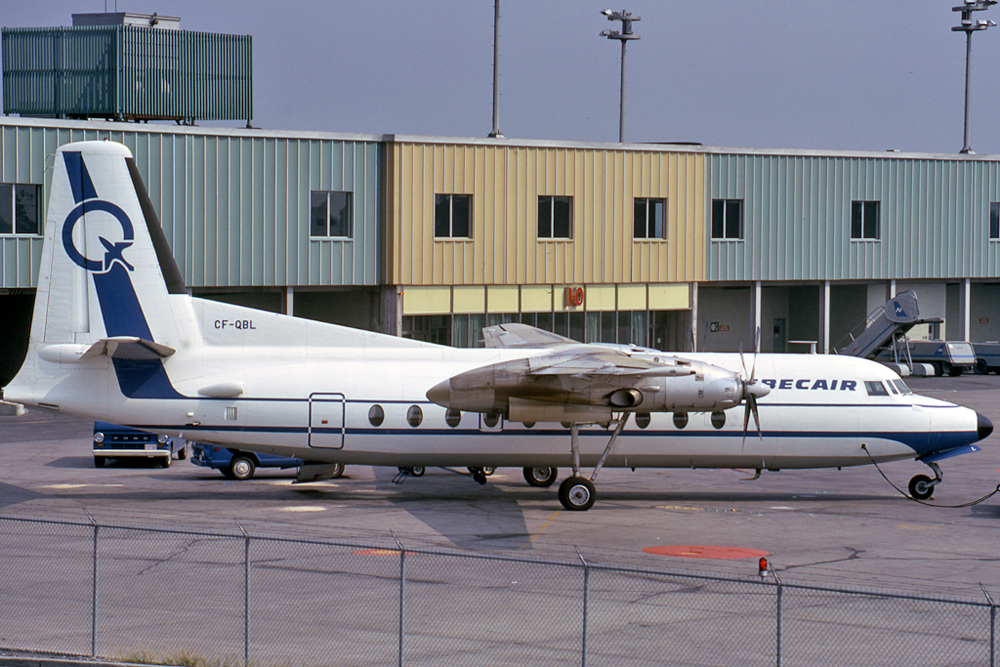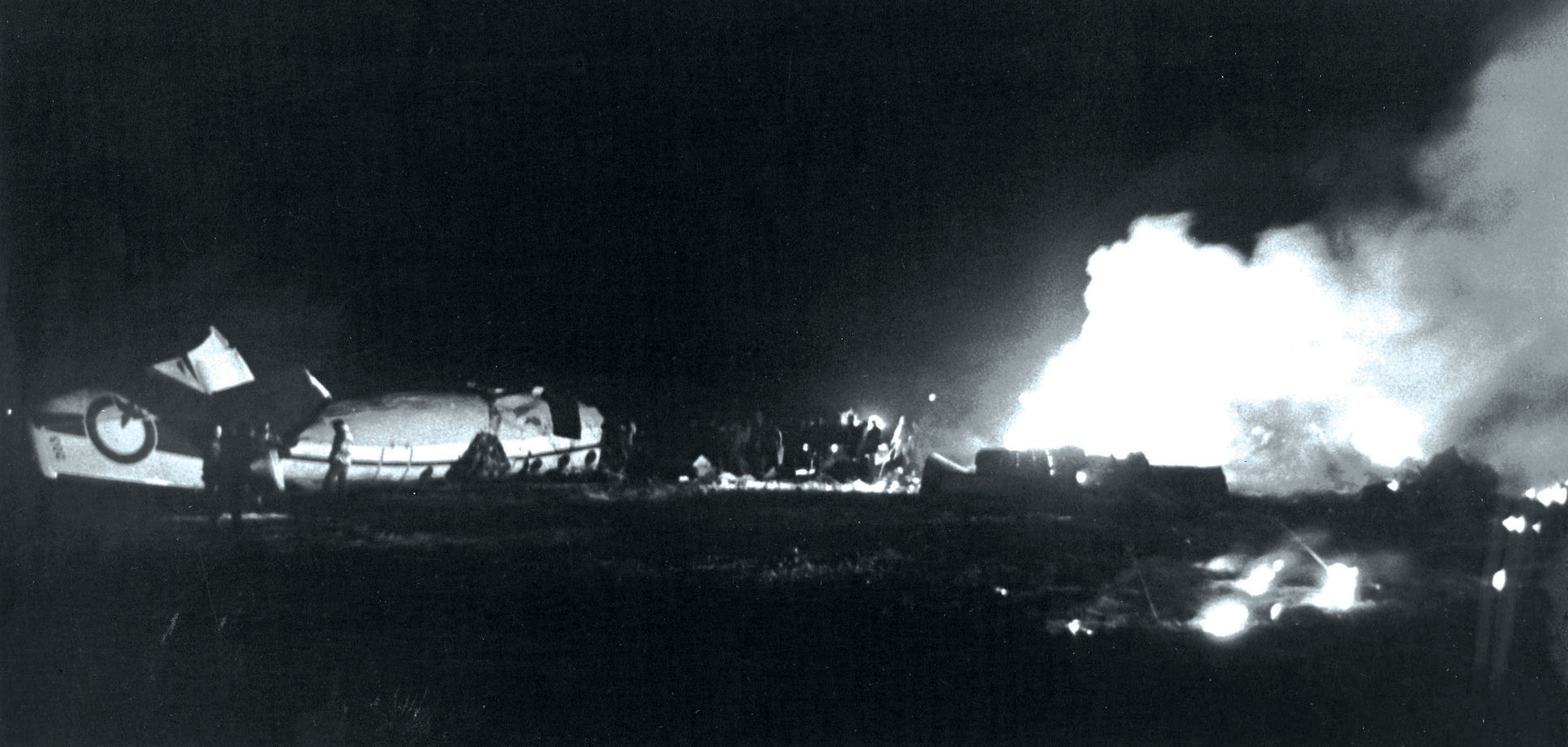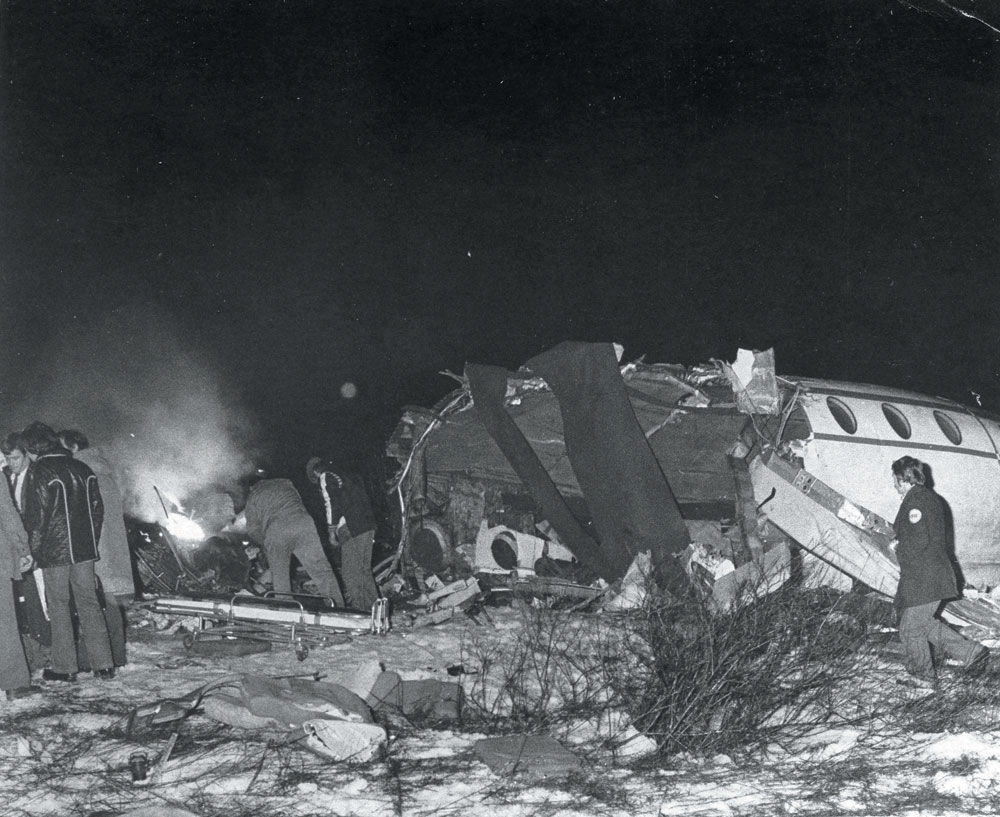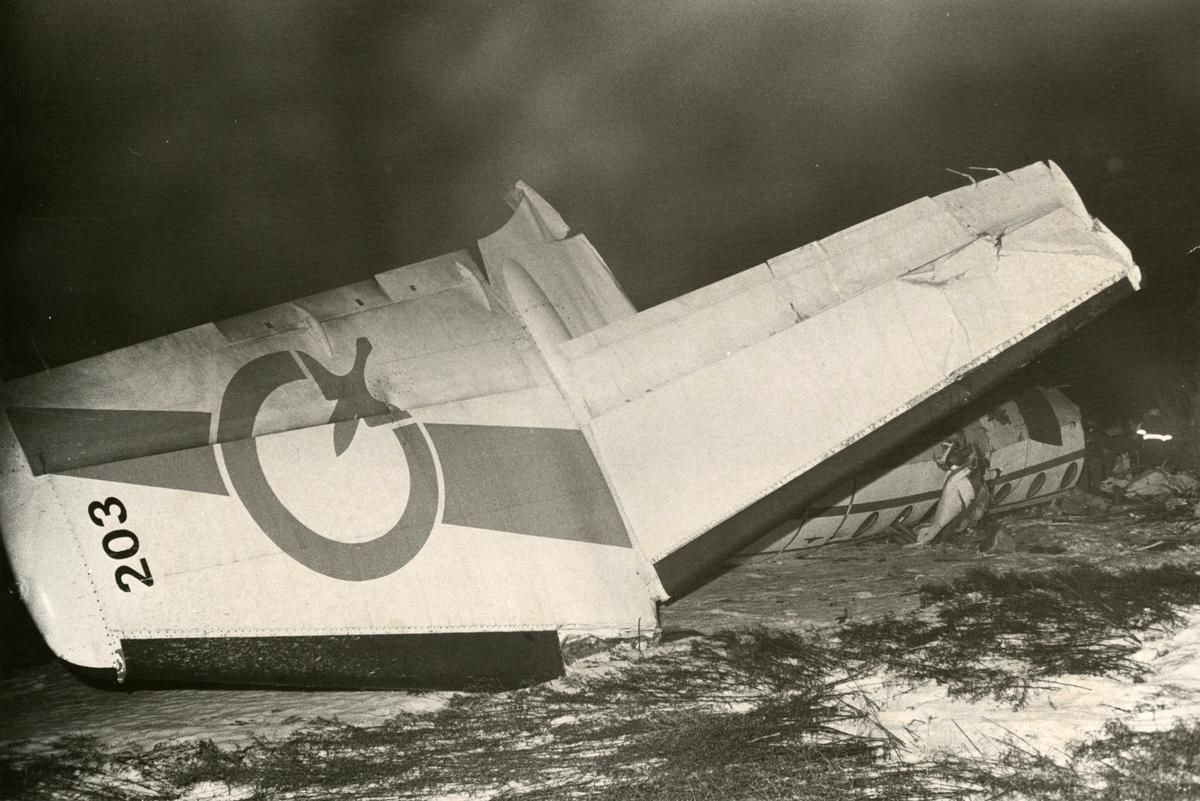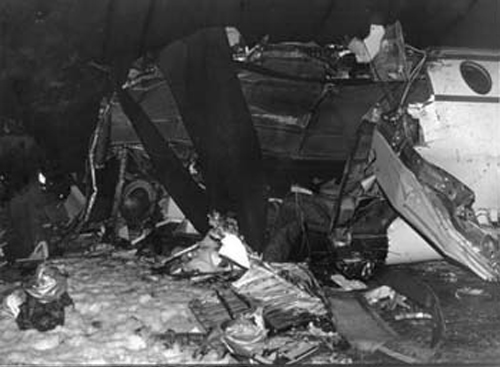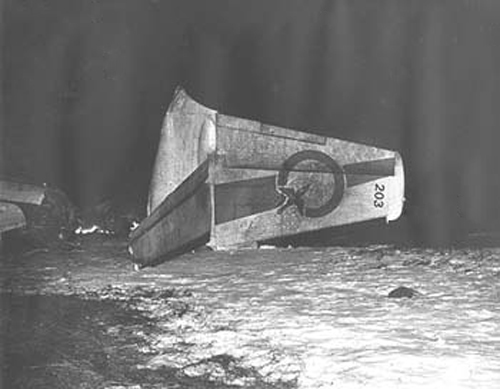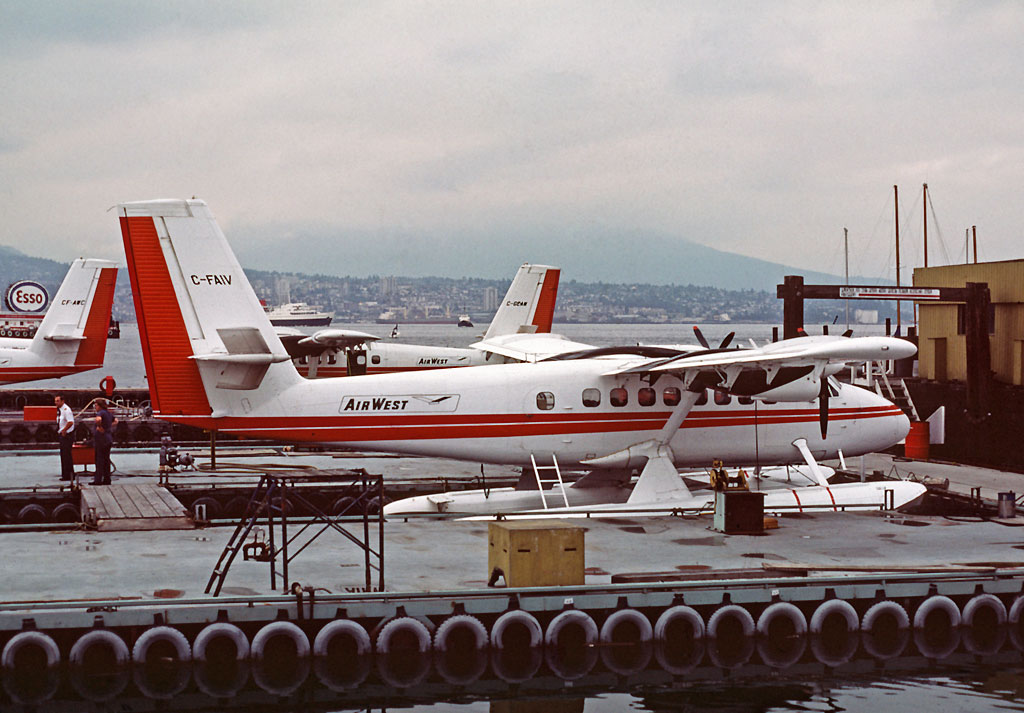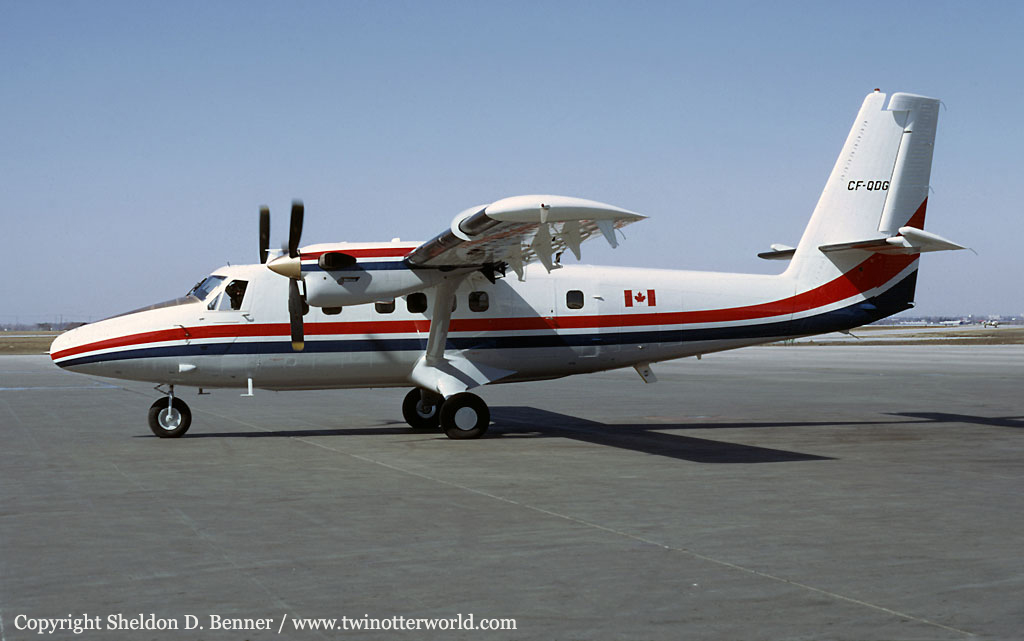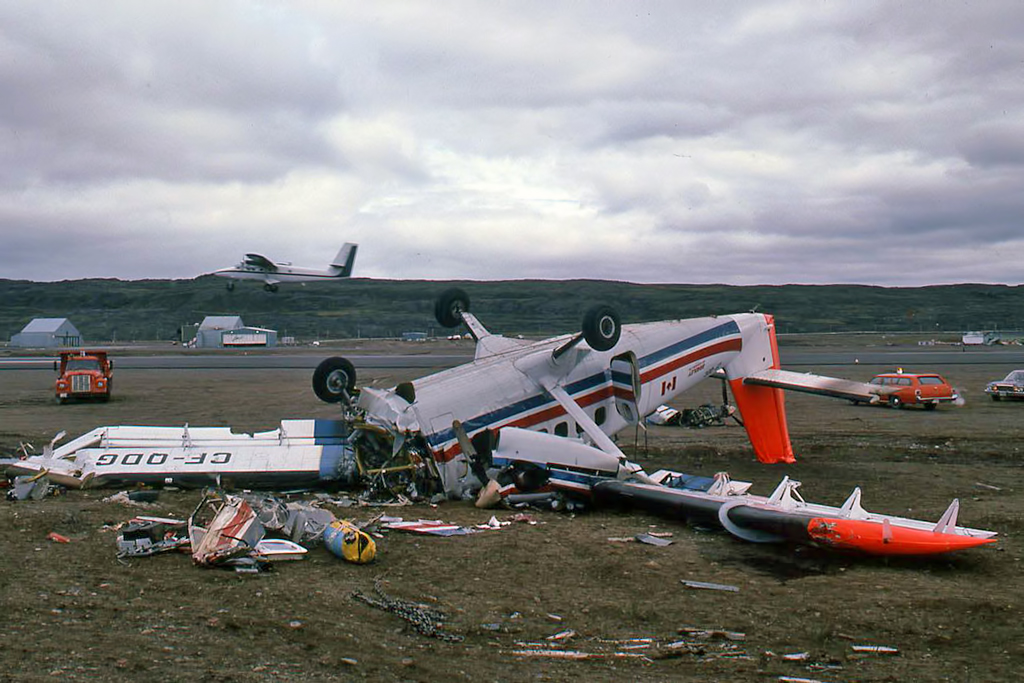Crash of a Fairchild F27 in Quebec: 17 killed
Date & Time:
Mar 29, 1979 at 1845 LT
Registration:
C-FQBL
Survivors:
Yes
Schedule:
Quebec - Montreal
MSN:
47
YOM:
1959
Flight number:
QB255
Crew on board:
3
Crew fatalities:
Pax on board:
21
Pax fatalities:
Other fatalities:
Total fatalities:
17
Circumstances:
Shortly after liftoff from Quebec-Ancienne Lorette Airport, en route to Montreal-Dorval Airport, the right engine caught fire. The captain contacted ATC, declared an emergency and was cleared to return for an emergency landing. He initiated a turn to the right when the airplane lost height, struck the ground and crashed in flames about 1,300 meters short of runway. Seven passengers were seriously injured while 17 other occupants were killed.
Probable cause:
It was determined that during initial climb, the low pressure impeller from the right (n°2) engine burst, causing the forward part of the engine to separate. The gear couldn't be raised because of engine debris damage to the electronic gear selection circuitry. This, including the exposed engine and lower cowl, increased the drag. In this configuration the aircraft wasn't capable of out-climbing obstacles straight ahead nor capable of maintaining altitude during the right hand turn. Engine separation and passenger movement resulted in the center of gravity shifting beyond its aft limit. The airspeed then decreased until the aircraft struck the ground at or below the minimum control speed (Vmc). Investigations revealed that the low pressure impeller burst due to the presence of fatigue cracks that had not been detected by the technicians in charge of the aircraft's maintenance.
